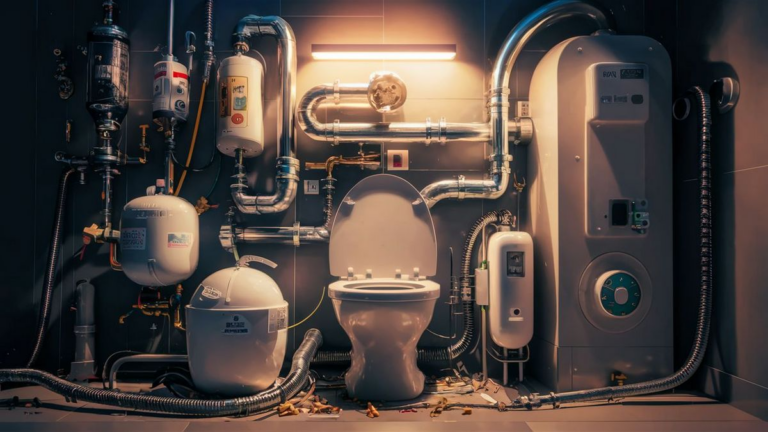When it comes to the intricacies of air travel, there’s often a curiosity about what happens with waste on an airplane. Passengers may ponder this question during long flights, and it’s a valid one considering the confined space and shared facilities. Let’s delve into the process of managing human waste at 30,000 feet.
The Lavatory System
Modern aircraft are equipped with lavatories, commonly known as airplane bathrooms or toilets. These facilities are designed to handle human waste efficiently and hygienically. Passengers use the lavatories throughout the flight, and the waste collected needs to be managed properly to ensure a comfortable and safe journey for everyone on board.
Onboard Waste Tanks
Most commercial airplanes are equipped with onboard waste tanks located beneath the lavatories. These tanks are specifically designed to store human waste during the flight. When a passenger flushes the toilet, the waste is deposited into these tanks, which are sealed to prevent leakage or odor issues within the aircraft cabin.
Chemical Treatment
To control odors and break down waste effectively, aircraft waste tanks are treated with chemicals. These chemicals help to neutralize odors and accelerate the decomposition of organic matter, making the waste easier to manage and dispose of properly upon landing.
Monitoring and Maintenance
Airline crew members are responsible for monitoring the status of waste tanks throughout the flight. They use sensors and gauges to determine when a tank is nearing its capacity. If necessary, the crew can empty and clean the waste tanks during layovers or at designated maintenance facilities.
Disposal upon Landing
Once the aircraft lands at its destination, the waste collected in onboard tanks needs to be properly disposed of. Airlines have established procedures for waste disposal, which typically involve pumping the waste from the aircraft’s tanks into specialized ground service vehicles.
Sanitary Practices
Ground service personnel follow strict sanitary protocols when handling aircraft waste. They use specialized equipment to safely and efficiently transfer the waste from the aircraft to designated disposal facilities. These facilities are equipped to handle and treat the waste in an environmentally responsible manner.
Regulatory Compliance
Airlines must adhere to regulations and guidelines set forth by aviation authorities regarding waste management. These regulations ensure that waste is handled safely and responsibly, minimizing environmental impact and maintaining the health and comfort of passengers and crew.
So, where does the poop go on a plane? In essence, it’s collected in onboard waste tanks, treated with chemicals, and disposed of properly upon landing. The entire process is carefully managed to ensure the safety, comfort, and environmental responsibility of air travel.
Environmental Impact of Aircraft Waste
While airlines have established procedures for waste disposal, the environmental impact of aircraft waste remains a concern. The chemicals used to treat waste can have implications for ecosystems if not handled properly. Additionally, the sheer volume of waste generated by air travel contributes to environmental pollution. Efforts to mitigate this impact include research into more eco-friendly waste treatment methods and increased recycling of waste materials.
Alternative Waste Management Technologies
Some airlines are exploring alternative waste management technologies to reduce their environmental footprint. These technologies may include on-board waste treatment systems that minimize the need for chemical additives or even systems that convert waste into biofuels or other useful products. By investing in innovative solutions, airlines can work towards more sustainable practices in waste management.
Passenger Education and Awareness
Increasing passenger education and awareness about proper waste disposal practices can also contribute to reducing the environmental impact of aircraft waste. Airlines can provide information to passengers about how to minimize waste generation during flights and encourage recycling of materials such as plastic bottles and packaging. By engaging passengers in sustainable practices, airlines can foster a culture of environmental responsibility within the aviation industry.
| Issue | Impact | Mitigation |
|---|---|---|
| Chemical waste treatment | Potential environmental contamination | Research into eco-friendly alternatives |
| Volume of waste | Contributes to pollution | Increased recycling efforts |
| Passenger waste generation | Contributes to overall waste volume | Passenger education on reducing waste |
Frequently Asked Questions
- Are airplane lavatories cleaned between flights?
- How often are aircraft waste tanks emptied?
- What happens if a waste tank reaches its capacity mid-flight?
- Can passengers dispose of items other than human waste in airplane toilets?
See also:






